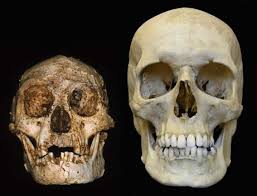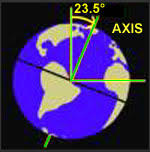 At a press conference yesterday, researchers announced the completely unexpected: a Siberian cave has yielded evidence of an entirely unknown human relative that appears to have shared Asia with both modern humans and Neanderthals less than 50,000 years ago.
At a press conference yesterday, researchers announced the completely unexpected: a Siberian cave has yielded evidence of an entirely unknown human relative that appears to have shared Asia with both modern humans and Neanderthals less than 50,000 years ago.
The find comes courtesy of a single bone from individual's hand. Lest you think that paleontologists are overinterpreting a tiny fragment, it wasn't the shape of the bone that indicates the presence of a new species—it was the DNA that it contained.
The paper that describes the finding comes courtesy of the Max Planck Institute's Svante Pääbo, who has been actively pursuing the sequencing of the Neanderthal genome. It seems likely that this particular bone fragment was targeted due to suspicions that it might also provide an additional Neanderthal sequence.

 Science Glance
Science Glance Unlike other amphibious creatures that can survive underwater on stored oxygen but must come back up for air, these caterpillars can spend several weeks without ever breaking the surface, according to the paper, which was published online on Monday in Proceedings of the National Academy of Sciences.
Unlike other amphibious creatures that can survive underwater on stored oxygen but must come back up for air, these caterpillars can spend several weeks without ever breaking the surface, according to the paper, which was published online on Monday in Proceedings of the National Academy of Sciences. “Evidence .... Show me evidence of CURRENT ‘intelligent life on Mars.’ :) All we see are ruins ... literally thousands of square miles ... of ruins. And, a lot of mud covering them ... slowly eroding and blowing away in the wind. Which is why we can now see glimpses [of] what was once buried in a vast, planetary catastrophe--Which suddenly ENDED the Martian Civilization ... a long, long time ago. RCH - P.S. If there is anyone NOW living on Mars, it is ‘us’ -- as part of the ~60-year-old Secret Space Program."
“Evidence .... Show me evidence of CURRENT ‘intelligent life on Mars.’ :) All we see are ruins ... literally thousands of square miles ... of ruins. And, a lot of mud covering them ... slowly eroding and blowing away in the wind. Which is why we can now see glimpses [of] what was once buried in a vast, planetary catastrophe--Which suddenly ENDED the Martian Civilization ... a long, long time ago. RCH - P.S. If there is anyone NOW living on Mars, it is ‘us’ -- as part of the ~60-year-old Secret Space Program." Her scientific name is Homo floresiensis, her nickname is "the hobbit," and the hunt is on to prove that she and the dozen other hobbits since discovered are not a quirk of nature but members of a distinct hominid species.
Her scientific name is Homo floresiensis, her nickname is "the hobbit," and the hunt is on to prove that she and the dozen other hobbits since discovered are not a quirk of nature but members of a distinct hominid species. Critics of the teaching of evolution in the nation’s classrooms are gaining ground in some states by linking the issue to global warming, arguing that dissenting views on both scientific subjects should be taught in public schools.
Critics of the teaching of evolution in the nation’s classrooms are gaining ground in some states by linking the issue to global warming, arguing that dissenting views on both scientific subjects should be taught in public schools. Just 50 miles off the Pacific Northwest coast is an earthquake hotspot that threatens to unleash on Seattle, Portland and Vancouver the kind of damage that has shattered Chile.
Just 50 miles off the Pacific Northwest coast is an earthquake hotspot that threatens to unleash on Seattle, Portland and Vancouver the kind of damage that has shattered Chile. The earthquake that killed more than 700 people in Chile on Feb. 27 probably shifted the Earth’s axis and shortened the day, a National Aeronautics and Space Administration scientist said.
The earthquake that killed more than 700 people in Chile on Feb. 27 probably shifted the Earth’s axis and shortened the day, a National Aeronautics and Space Administration scientist said.






























